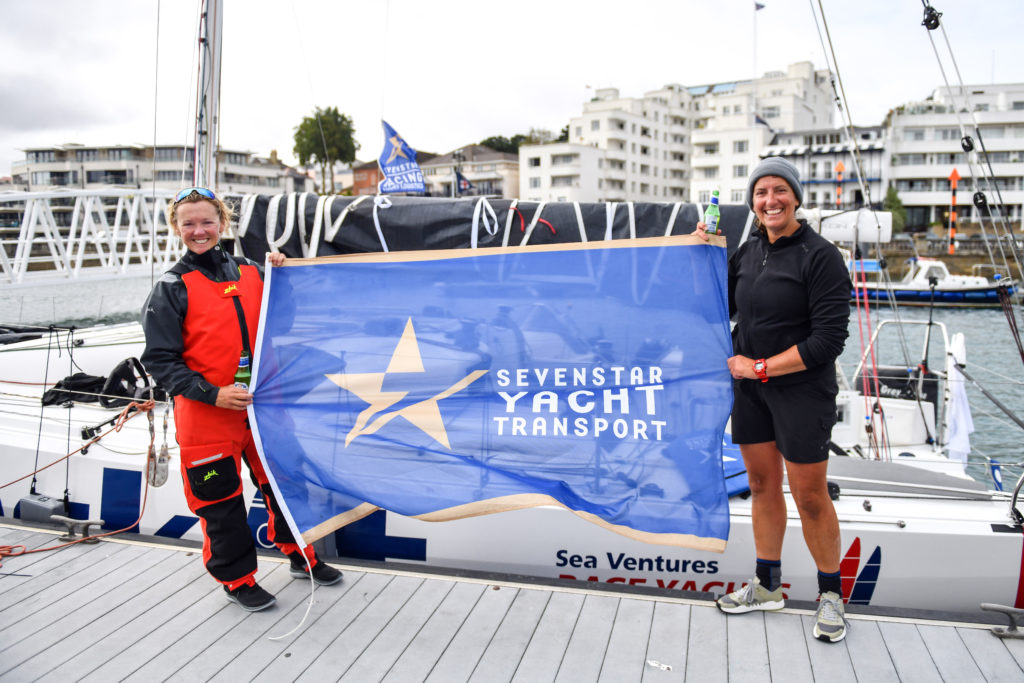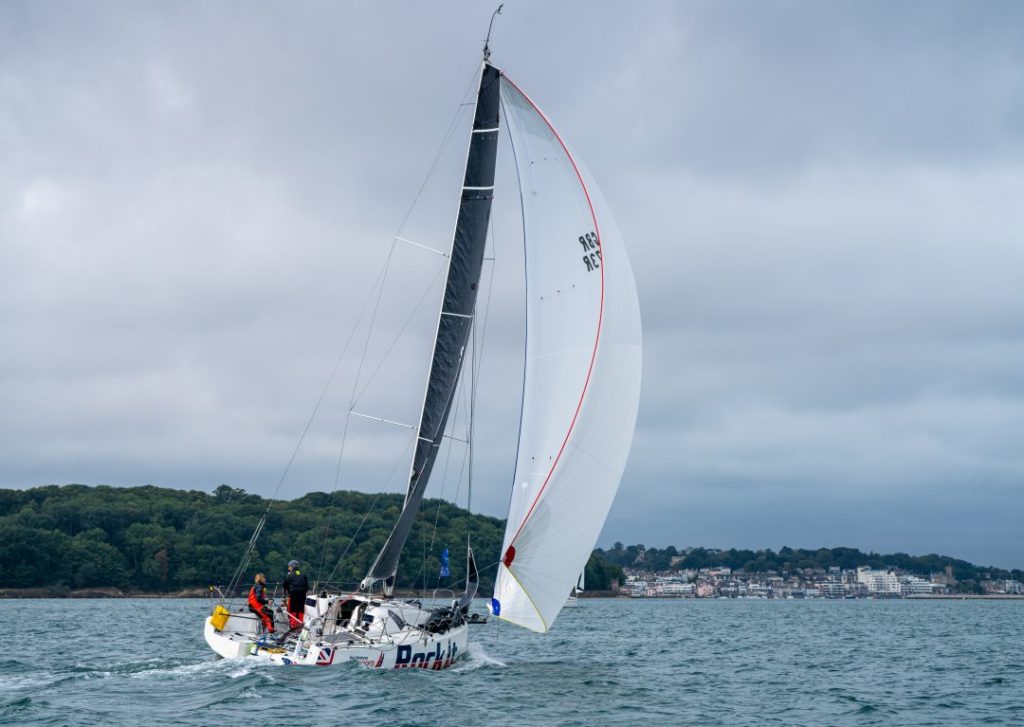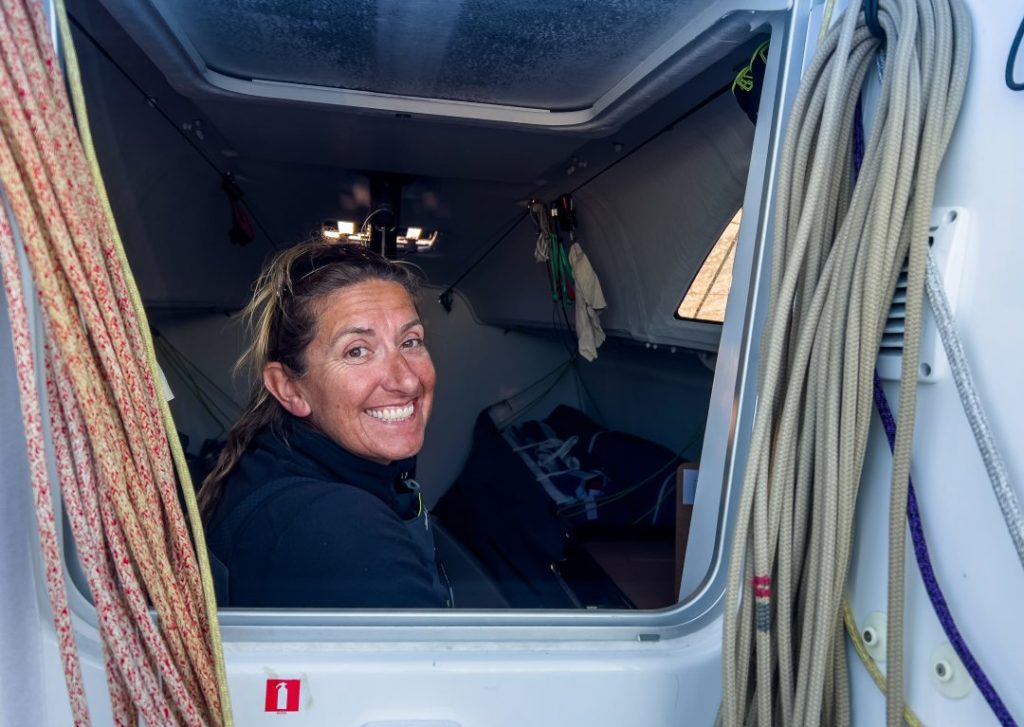
August was all about the Sevenstar Round Britain and Ireland Race…and the recovery thereafter. I have written a summary of the race which gives an insight into our two weeks at sea, ahead of episodes 5 and 6 of the series of short films following RockIt’s 2022 campaign which will be released soon.
With light winds forecast for the first week, we were not heading into anything scary but making tidal gates and headlands in these conditions would be difficult. We worked hard to gain some distance from the rest of the fleet and stay in touch with the slightly faster boats only to see all that effort go to waste as we parked in no wind and watched as everyone bunched up together again, resulting in numerous re-starts.
As we moved through the week, the light winds and warm weather caused frustration. It was difficult to hide from the sun when on deck, but we needed to focus if we were to have any chance of moving forwards. Invariably, moving in any direction was preferable to standing still and I could not believe it when we had been at sea for a whole week but were yet to leave Irelands’ coastline behind. It was incredible that there was nothing between us and America to break up the Atlantic and yet there was barely even a swell present. Traditionally we would expect a large rolling sea with strong southwest winds allowing us to make these miles easily with very little pressure. This was anything but.
On the upside, this coastline is stunning and habitat to some amazing wildlife. We saw a mass of sea birds, dolphins, whales, seals and, as we ventured further north, even puffins.
We finally cleared Black Rock at the north west coast of Ireland and headed for St Kilda in Scotland. The temperature began to drop as the wind increased. The 300 miles from St Kilda was a one-sided beat, port tack all the way, to the very top of the Shetland Islands and the infamous Muckle Flugga lighthouse. The wind reached 27 knots and the sea state was messy, creating waves that made our motion more like a hobby horse. Our boat is designed for reaching and blasting downwind so, with its round bow and flat bottom, upwind sailing is far from comfortable. It was fine being on deck, managing the waves and the spray, but down below it sounded like we were in storm force conditions and barely surviving.
These conditions made doing anything below deck very difficult. Sleeping was tricky with the slamming and noise; even eating and drinking were a test. We passed beautiful islands and headlands but rounded the Shetlands in the dark with a horribly uncomfortable sea state. Once we turned at the top and finally started heading south it was a different story and felt as though we were on the downhill stretch back home.

The next waypoint was some 500 miles away on the Norfolk coast. The North Sea was grey and felt remote as we had lost sight of the competition that had kept us company every day until now. Without being able to check our speed against them or even see where they were, felt quite lonely. Our reward, as we turned the top corner, was 12 hours of downwind fun. We were treated to 20 knots, with some gusts of 25 knots, of downwind sailing and it was awesome. With hindsight perhaps I was too busy allowing us to enjoy these conditions as I ventured too far to the East, and we lost out to our rivals on this stretch.
As we descended the North Sea, we started to see oil rigs which all have a 500m exclusion zone around them. While most are derelict, there are some still in operation and they are ominous in their stature. Lit up like Christmas illuminations at night, they are easy to spot and therefore avoid. Joining the list of obstructions to avoid along this stretch were wind farms. These are tricky as they are both numerous and well spread out over large regions of the North Sea. Not surprisingly, they also have a massive effect on the wind flow. I decided not to tack to pass one wind farm to weather, and as a result we spent a long time passing it to leeward. This was fine initially but I can’t help feeling that it was a mistake and we suffered more random wind direction and strength being the wrong side of what was a huge expanse of water covered with turbines.
As we were a couple of hundred miles from the waypoint, close to the Norfolk coast at Great Yarmouth, we began to see more shipping. Large containers and commercial ships were now added to our ‘obstructions to avoid’ list.
Once past the Norfolk coast waypoint, we still had the Thames Estuary to navigate and then the South Coast before the finish line, but everything then happens very quickly indeed. Once clear of the waypoint you need to be on top of the navigation because now sandbanks and traffic separation schemes are added to the mix. On a chart at first glance, there is not a lot of room to sail in and choices are limited. At this stage of the race, we had the added pressure of seeing our competition close once again. The same boats we had been sailing with from the start all the way up to Muckle Flugga were now back in view and on the AIS.

We entered the busy Thames Estuary in 20 knots of upwind sailing. Compared to the light airs we had been experiencing, it felt like we were sailing very fast in a gale as we navigated between all these obstacles. We made our sail changes and headed into the night, keeping up the conversation about upcoming hazards and focusing on identifying the right lights in the darkness.
Sandbanks are ever shifting in strong winds and waves, so it came as no great surprise when I tested the depth on the chart on a small sandbank. In theory we should have had 3 metres under us, but the reality was just 1 metre below the keel. Knowing the chart was not accurate to depth added just a little more stress, so I opted to go round the outside of the next shallow patch.
That night was busy and feeling tired wasn’t an option. Dawn arrived as we cleared the Goodwin Sands off Ramsgate and our tour of the South Coast beaches, tacking in against the tide, began. It was a comfortable day with flat water, stable and light breeze making us work hard when the tide was against us. Tacking into the shore, we were almost close enough to smell the fish and chips at dinner time. Rounding Owers Buoy in company, we all hoisted our spinnakers and sailed straight for the forts as we entered the Solent in downwind conditions. The opportunity to overtake was gone but we could still enjoy the sail in.
The light airs, that seemed to accompany us for a large part of this race, put in one last appearance at the finish, resulting in several boats coming in together. This did mean that our reception at Trinity Landing was unexpectedly large as, even those that had been lucky enough to finish during the night before, came to celebrate the fact that we had all completed a tough race. It had taken us 14 days 22 hours, 30 boats started, 20 boats finished, and we placed 7th
My all-female crewed record remains safe. I had achieved the record originally on the IMOCA Aviva, taking 6 days 11 hours to complete the course in 2009. We then broke that record, which still stands, with Team SCA in 2014 taking 4 days and 21 hours
Although the race felt like we spent 5 days looking for wind followed by 10 days sailing upwind, we were a happy team that worked together to achieve the goal. Shirley and I came to this project only four months ago on our new Sunfast 3300 RockIt. It has been tough, we worked hard and are very proud of what we have achieved.
For Shirley, it is the longest period she has spent offshore, and she really stepped up. It is a huge achievement, and I am very proud of how she rose to the challenge. Bizarrely, the reality is that it is easier and quicker to cross the Atlantic, yet crossing an ocean sounds immense. The Round Britain and Ireland race, which sounds like a nice tour of our coastline, is often underestimated. Being that it only comes around every four years and is tougher than you imagine, I believe it is a special race and definitely one to tick off the bucket list.
It has taken me longer than anticipated to recover from the post-race fatigue, but the smile hasn’t left my face. Until next time…